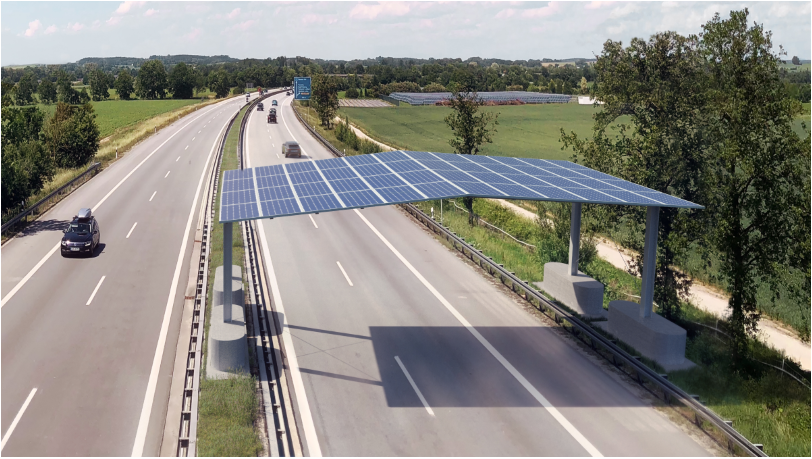
A solar roof for the highway – at least for a small part of it. That is what is to be built at the Hegau-Ost rest area on the A81 Autobahn in Baden-Württemberg in southern Germany. The project is part of a joint road construction research of the three neighboring countries of Germany, Austria and Switzerland.
The Fraunhofer Institute for Solar Energy Systems, (Germany), Forster FF Verkehrstechnik and the Austrian Institute of Technology (both in Austria) have designed a structure for roofing the highway with photovoltaic modules. This prototype will now be used to demonstrate that the generation of solar power above flowing traffic works in reality. The prototype consists of a 10-by-17-meter roof surface made of photovoltaic modules located about 5.50 meters above the roadway resting on a steel structure.
“With this research project, we want to develop the potential of the highway for renewable energy generation,” said Steffen Bilger, parliamentary state secretary at the Federal Ministry of Transport and Digital Infrastructure. “Covering a highway is particularly technically challenging because of the fast-moving traffic underneath. But the vision of reusing an already sealed surface for generating the energy needed by the electric vehicles driving underneath it is something that simply has to be pursued.”
Vehicle impact
Building photovoltaic modules over roads is much more expensive compared to photovoltaics on existing roofs or in open spaces. For example, in the event of an accident on the road below, the support structure must be protected against possible vehicle impact to prevent collapse. To make matters worse, from a length of 80 m, such support structures would have to be classified similarly to tunnels and the structure would then have to meet even higher safety requirements.
Limited areas of application
The aim of the German-Austrian-Swiss research project is therefore to demonstrate that such a structure is economically feasible under real traffic conditions and can be operated on a permanent basis. Although the modular design of the prototype has some cost advantages, a widespread application of solar roofs over highways is rather unlikely in the medium term. By comparison, there is still a large potential of areas where renewable energy can be generated less expensively. But for special, locally limited areas of application, the experts see possible uses for a solar roof over highways.
Construction of the prototype is expected to begin in the fall. After that, the operation of the system will be scientifically monitored for about a year. Further pilot applications can then be rolled out on the basis of that experience.
Also interesting: Trucks become solar parks on wheels thanks to IM Efficiency








